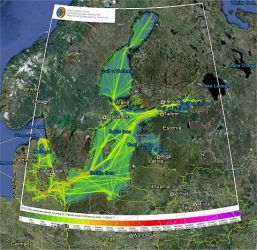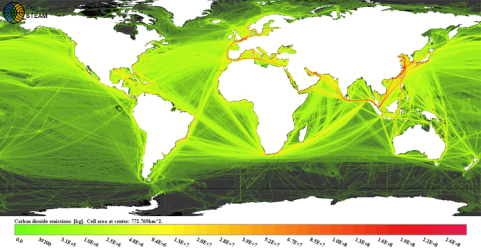Surveying the maritime emissions
"It is generally accepted that more than 90 per cent of global trade is carried by sea" (IMO Maritime Knowledge Centre, Facts and Figures). This statement underlines the importance of shipping sector to the global economy. Local, regional and global features of shipping are variable, sometimes even contradictory, because economical development is different in various regions. For a long time research of ship emissions was limited by the lack of knowledge regarding ship activity, but significant improvements in ship activity monitoring have been made in the last few years. Vessel navigational systems like the Automatic Identification System (AIS) facilitate ship traffic monitoring in real time, but also enables us to obtain a realistic traffic image for ship emission modeling. In this regard, FMI has been in the forefront of the development with the Ship Traffic Emission Assessment Model (STEAM) which can provide fully dynamic ship emission inventories which reflect the changes in vessel routing and operation.
The development of STEAM allows studies of ship emissions ranging from harbor scale to global applications. In the figure below, a summary of CO2 emissions of the Baltic Sea shipping during year 2011 is illustrated. This example indicates that the ship traffic monitoring based on individual vessel movements is possible, which significantly improves our knowledge of the geographical distribution of ship traffic and its emissions. This allows for unprecedented insight in ship emission studies, far surpassing the level of knowledge available from most other traffic sectors or what has been previously available for the air quality research.


Further information can be found here.
1.11.2023
